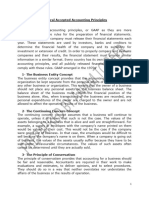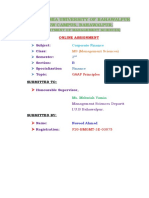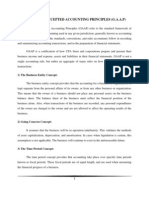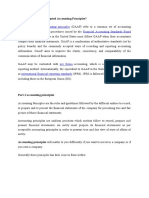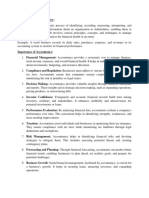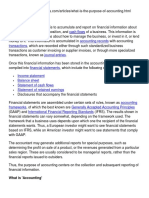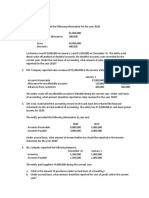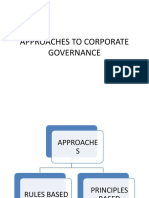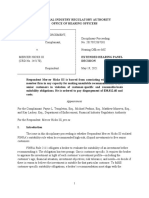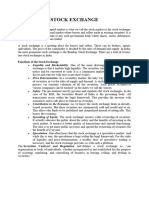0% found this document useful (0 votes)
21 views3 pagesChapter - 3 Basic Accounting Principles
Accounting principles are rules set by the Financial Accounting Standards Board (FASB) that companies must follow when reporting financial data, known as GAAP. The document outlines ten key principles of GAAP, including regularity, consistency, sincerity, and materiality, which guide accurate financial reporting. Additionally, it explains the double-entry bookkeeping system, where each transaction is recorded in at least two accounts as debits and credits that must balance.
Uploaded by
RicoCopyright
© © All Rights Reserved
We take content rights seriously. If you suspect this is your content, claim it here.
Available Formats
Download as PDF, TXT or read online on Scribd
0% found this document useful (0 votes)
21 views3 pagesChapter - 3 Basic Accounting Principles
Accounting principles are rules set by the Financial Accounting Standards Board (FASB) that companies must follow when reporting financial data, known as GAAP. The document outlines ten key principles of GAAP, including regularity, consistency, sincerity, and materiality, which guide accurate financial reporting. Additionally, it explains the double-entry bookkeeping system, where each transaction is recorded in at least two accounts as debits and credits that must balance.
Uploaded by
RicoCopyright
© © All Rights Reserved
We take content rights seriously. If you suspect this is your content, claim it here.
Available Formats
Download as PDF, TXT or read online on Scribd
/ 3





